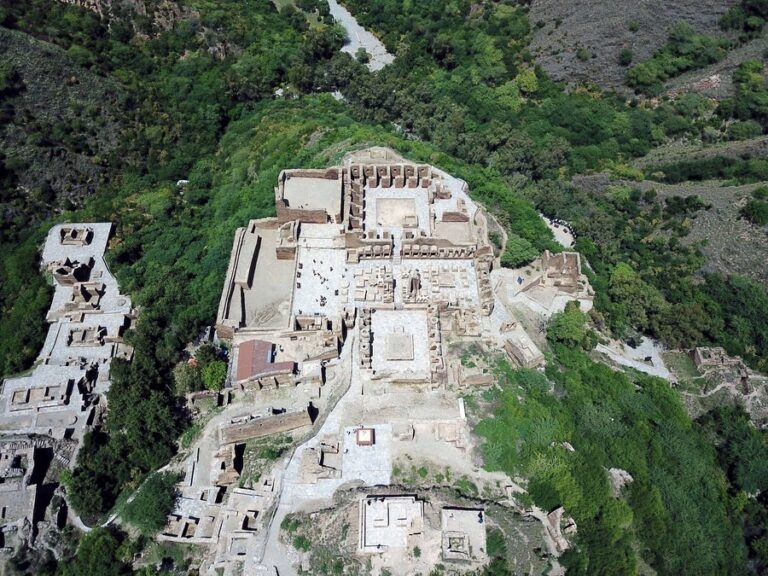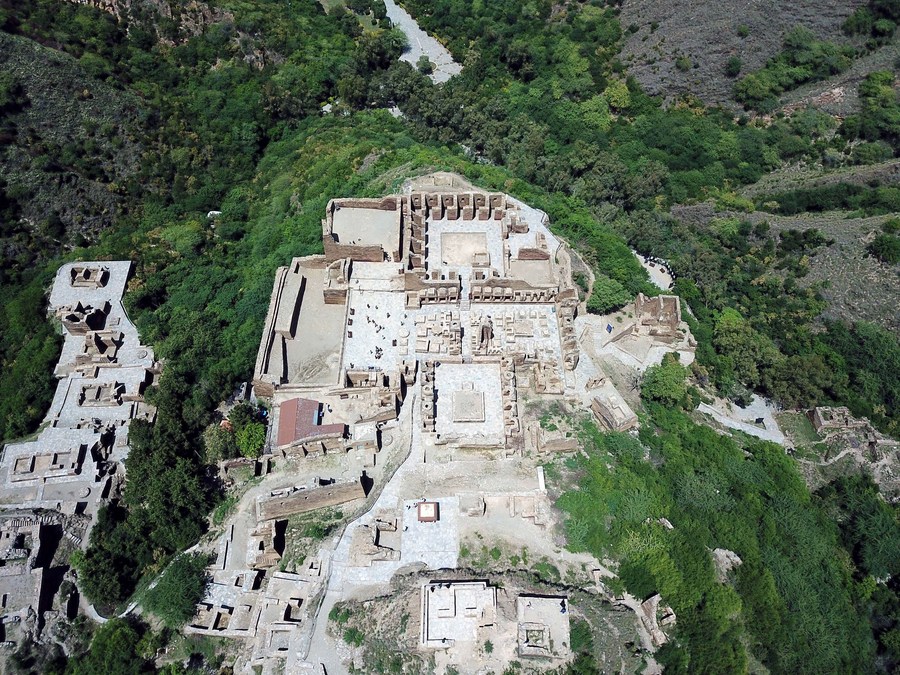
Aerial photo taken on May 5, 2024 shows the ruins of the ancient Buddhist monastery Taktibahhi, a UNESCO World Heritage Site, in northwestern Pakistan’s Mardan district. (Xinhua/Ahmad Kamal)
Pakistan is rich in cultural heritage, with numerous historical and cultural sites scattered across the South Asian country. China and Pakistan are stepping up efforts to preserve archaeological sites, including Taktibahhi, under the Guardians of Gandhara program, run by Chinese and Pakistani scholars and volunteers.
Written by Raheela Nazir
ISLAMABAD, May 18 (Xinhua) — Climbing the stone steps towards the ruins of the ancient Buddhist monastery Taktibahhi, Muhammad Hasan marvels at the beauty of the majestic and well-preserved ruins, while learning about the history and culture of Buddhism. immersed in teenagers.
Takhtibahhi, a UNESCO World Heritage Site, is one of the most prestigious Buddhist religious sites in the ancient Gandhara region, located in the northwestern Mardan district of the country of Khyber Pakhtunkhwa (KP).
Pakistan is rich in cultural heritage, with numerous historical and cultural sites scattered across the South Asian country. China and Pakistan have stepped up their efforts to preserve archaeological sites, including Taktibahhi, under the Guardians of Gandhara program, run by Chinese and Pakistani scholars and volunteers.
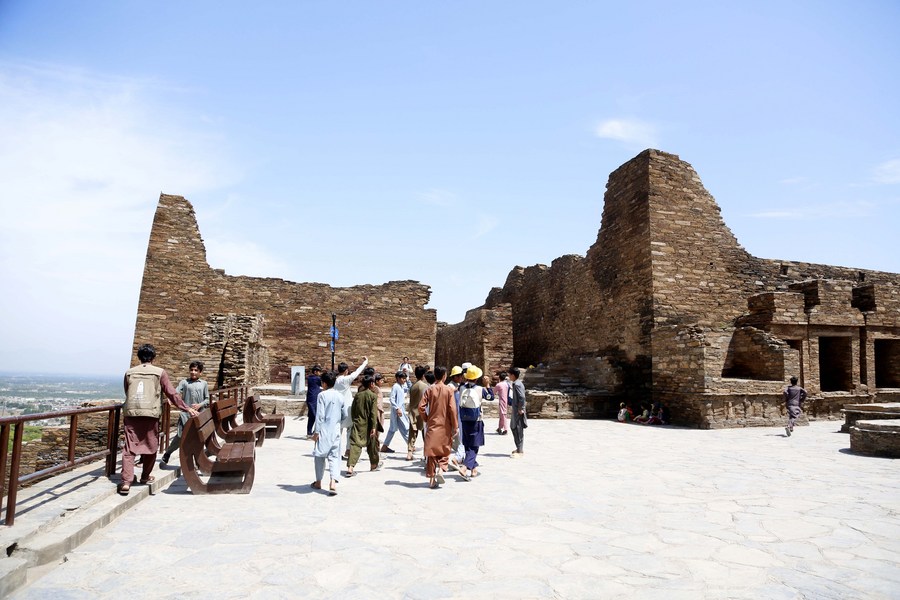
Students visit the ruins of the ancient Buddhist monastery Taktibahhi, a UNESCO World Heritage Site, in Mardan district, northwestern Pakistan, May 5, 2024 (Xinhua News Agency/Ahmad Kamal)
“Every two weeks, I come here with at least 50 students to learn about Buddhist monasteries, stupas, kings and their residences. They organize tours to other museums and teach us about civilizations and historical sites,” he said. A 13-year-old student in a heritage conservation class initiated under the Guardians of Gandhara programme.
“With China’s cooperation, we will protect and preserve our heritage for future generations, because heritage is our connection with our history, community and identity,” the student said. .
“The stories of ancient kings are very interesting. This site provides us with important information about how people lived, meditated and educated about 2,000 years ago. It’s very interesting,” said another student, Tahira.
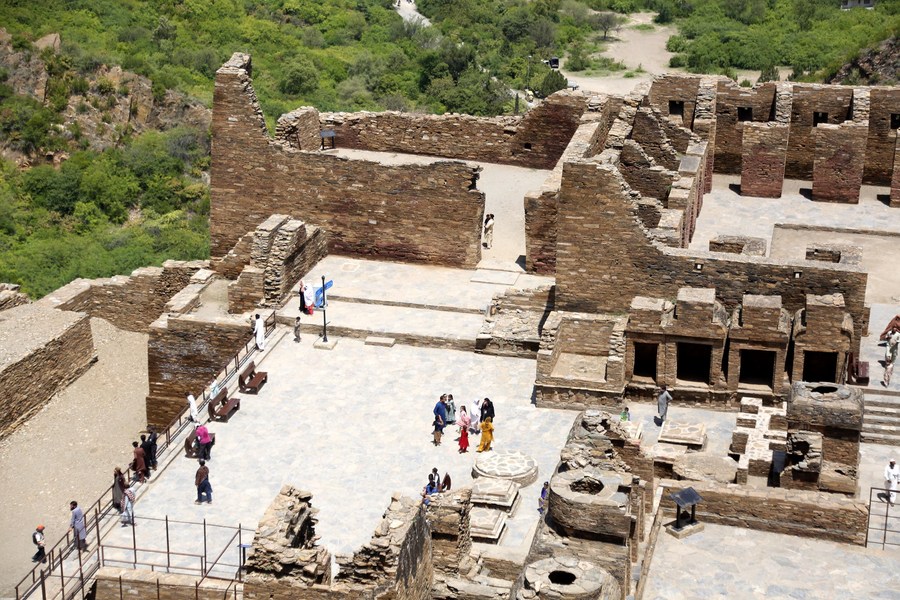
Tourists visit the ruins of the ancient Buddhist monastery Taktibahhi, a UNESCO World Heritage Site, in northwestern Pakistan’s Mardan district on May 5, 2024. (Xinhua/Ahmad Kamal)
Maaz Ali, a teacher and conservation assistant at the KP Directorate of Archeology and Museums, told Xinhua that the main purpose of the various educational projects is to educate local people living near the ruins about Pakistan’s heritage. , said it was about rebuilding their connection. Along with cultural heritage.
“Especially the younger generation is in charge of the custodians of Gandhara and will lead the way in preserving Pakistan’s important sites in the future,” he said.
He said Pakistani and Chinese teams were collaborating on the restoration of various monuments in Pakistan, adding that more monuments were being identified for conservation work.
Mr Ali said restoration work had been carried out in some places and the number of tourists, especially Chinese and Japanese, had increased in recent years. “Thousands of tourists have recently visited the historical sites, giving new impetus to Pakistan’s tourism sector and national development.”
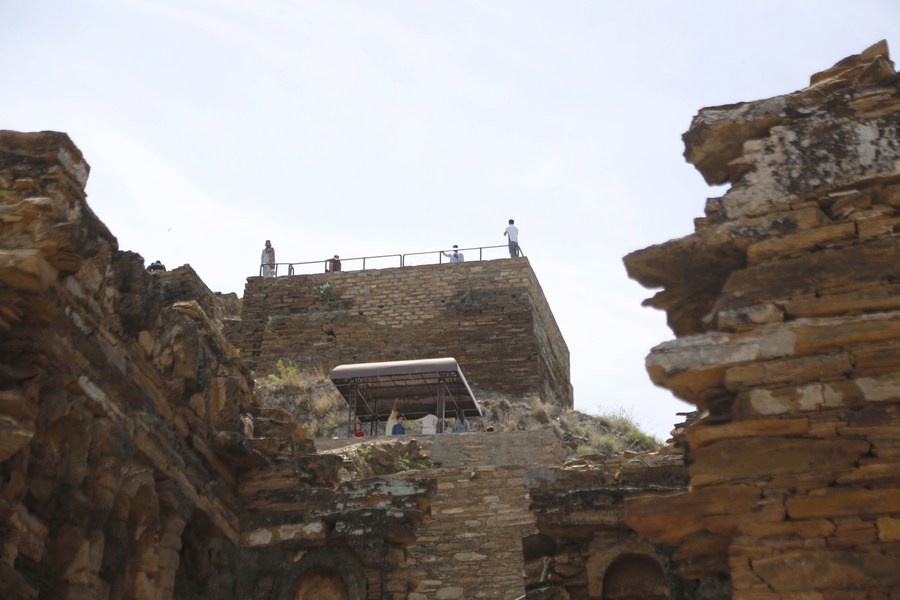
Tourists visit the ruins of the ancient Buddhist monastery Taktibahhi, a UNESCO World Heritage Site, in northwestern Pakistan’s Mardan district on May 5, 2024. (Xinhua/Ahmad Kamal)
On May 18, which marks International Museum Day, Pakistan called for cooperation with China to further strengthen the protection of cultural heritage.
China’s National Cultural Heritage Administration and Pakistan’s National Heritage and Culture Authority have signed a memorandum of understanding to jointly carry out archaeology, protection and restoration of cultural heritage, exhibition exchange, and prevention of illegal trade in antiquities.
KP Abdul Samad, Director of Archeology and Museums, told Xinhua that China always follows its word, and that its efforts to preserve Asia’s cultural heritage are realistic, and that China is working with Pakistani archaeologists to develop the modern He emphasized that technology is being used to preserve and restore the ruins.
He said Pakistan needs to further strengthen cooperation with China to protect heritage sites, maintain academic cooperation between universities and cultural heritage institutions of the two countries, and launch joint scientific and technological conservation efforts.
Samad believed that China’s cultural heritage cooperation and exchange programs with various countries, including Pakistan, are exemplary, adding that China’s effective measures towards harmonious coexistence of different civilizations will serve as a model for the world. .
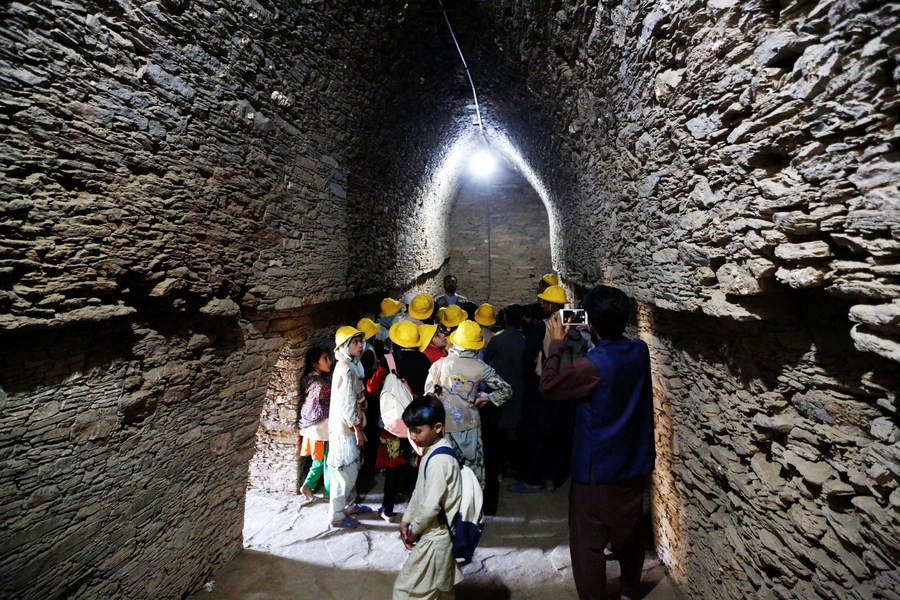
Students visit the ruins of the ancient Buddhist monastery Taktibahhi, a UNESCO World Heritage Site, in Mardan district, northwestern Pakistan, May 5, 2024 (Xinhua News Agency/Ahmad Kamal)
Chen Zhigang, associate professor at Shanghai Academy of Fine Arts and director of the Gandhara Guardian Program, said that China has established multi-layered exchange relationships with the Pakistani government, the Department of Archeology, museums and archaeological sites.
Commenting on future cooperation plans for the protection of cultural sites and archaeological sites in Pakistan, he told Xinhua that both countries need to focus more on improving tourism infrastructure, basic maintenance, and archaeological excavations of sites. He said there is.
In addition, the digitization of cultural heritage, joint scientific research projects, heritage education and cultural exchanges will also be further promoted in the future, he said. ■

